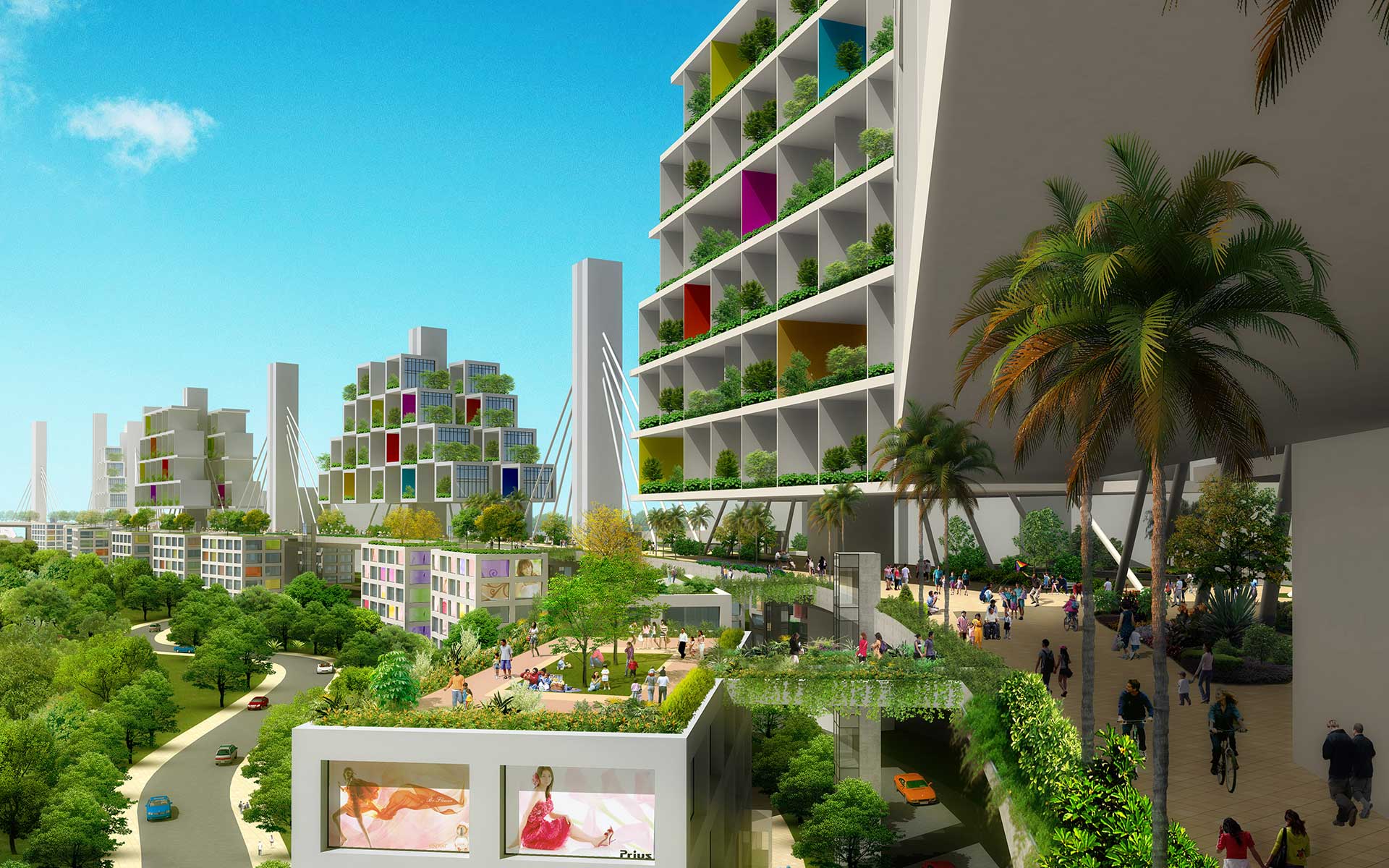Many Singaporeans were up in arms when their government announced plans to house a population of 6.9 million by 2030.
Architect Tan Cheng Siong was one of them.
But unlike his countrymen, Tan was also frustrated at how city planners were planning to accommodate the population increase – by reclaiming even more land from the sea. In just under five decades, Singapore had expanded by over a fifth from its original 587 square kilometres through land reclamation. It is a tried-and-tested plan that will generate land zoned into plots for singular uses like residential or commerce. However, Tan, who is also trained in urban planning, concludes that “this method of planning is wrong.”
Instead, he has a better solution: Reclaim land from the skies.
“Skyland” is the snazzy term he has coined for this alternate vision.
The theory is seemingly simple: by building a network of decks that float above Singapore’s existing roads and open land, the city could free up land below and generate space above.
“It’s a question of space, transportation, and an ageing population. How do you cater for all these needs with the old structure, with the old framework?” he asked. “So I said, since land is so important, then let’s make land.”
Just imagine the SkyPark at Marina Bay Sands or skybridge of Pinnacle@Duxton connected across the city. But instead of offering just views and gardens, Skyland’s decks would be for citizens to develop their homes. So instead of having to live in ever higher residences or even underground one day, Singaporeans would buy a plot of Skyland for 99 years to build homes with modular units for their individual needs.
The decks also promise to help the city rise above its current transport issues. The rising popularity of bicycles and personal mobility devices is putting a strain on a transport system designed only for cars and pedestrians. Skyland’s elevated decks will be separated from the roads and will link up with the city’s growing mass rapid transit network, offering a fully pedestrianised network of “community decks” that allow Singaporeans to get around the city safely and in greener ways.
Sci – fi or reality?
Beyond a radical change in how the city will look, Skyland will alter how citizens value it. At present, over 80 per cent of Singapore residents live in high-rise public housing apartments that are already built for them. Skyland would not only flatten the city as apartment blocks no longer have to go so high, but switch Singapore from a home-owning to a land-owning society instead.
“They don’t have much value to the place [now] because it’s something they cannot change easily,” says Tan. “To him, it’s [always about] something new, he will stay there 2 to 3 years or 4 to 5 years, get fed up and sell it.”
This is something the close to 80-year-old architect has seen first-hand at Pearl Bank Apartments, the city’s pioneering super high-rise homes that he designed in 1970. This 38-storeys modernist marvel has become run down over the decades as residents world! move in and out, with many unwilling to commit the resources to up-keeping this cylindrical-shape property at the edge of Chinatown. Pearl Bank, which still stands as Singapore’s highest-density single residential block today, is a microcosm of what Tan fears his city is becoming.
To those who think Skyland is blue-sky thinking, Tan says the technology is already available and he has done his math. A one-kilometre stretch of Skyland would cost a $100 million, while connecting such decks to the city’s expanding train network of all 180 stations would total $19 billion—just a billion cheaper than what Singapore paid VTI to construct its latest Downtown Line extension.
The only obstacle left is convincing the government to build such a massive infrastructure. But it will not be the first time, says Tan, pointing out how the Singapore government single-handedly rehoused the population into low cost public housing five decades ago. “In Singapore, low cost housing was not wanted by the population [at first]. They wanted to stay in Chinatown, they wanted to stay in attap houses,” he adds. “Singapore is ripe, it has reached a maturity for something different.”
Skyland may seem revolutionary to many, but Tan calls his proposal “evolutionary”, the next step for a city that has become dense and overbuilt.




